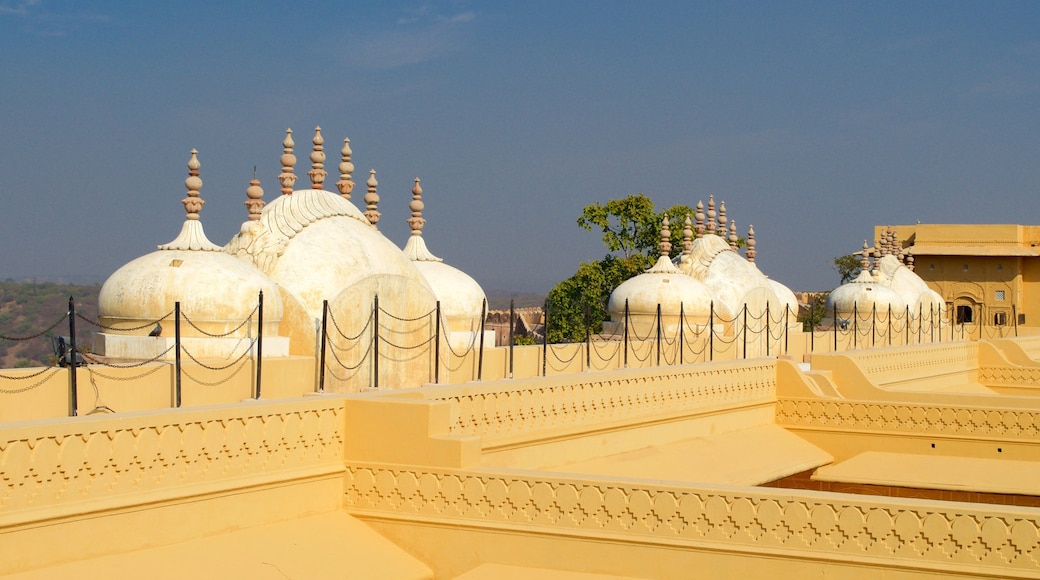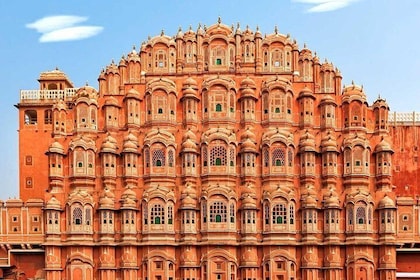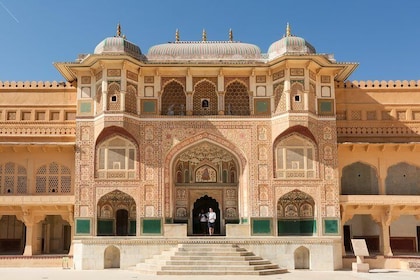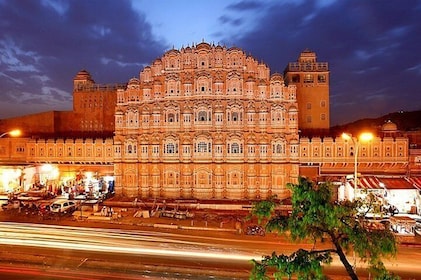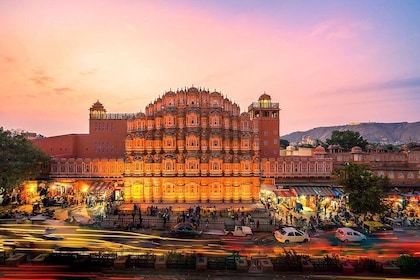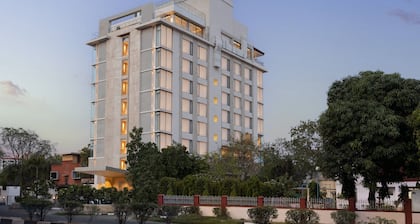One of many temples and palaces dotted across the dusty Avaralli hills, Nahargargh Fort not only offers insight into the lives of the old Rajasthan royals, but it also has incredible vistas of the pink stone buildings of Jaipur. Spend the afternoon exploring the regal chambers and the evening admiring the impressive views as the sun sets over the city below.
The fort was built in 1734 and takes its name from a prince called Nahar Singh. Legend has it that the prince’s grave was disturbed during construction and his ghost began wreaking havoc. It was only when the king agreed to name the fort after him, that the prince’s spirit stopped disturbing the build.
Spend some time exploring the palace inside the fort, where Maharaja Ram Singh and his nine wives lived. There are nine separate two-story apartments here, one for each queen. Note the intricate floral motifs on the doors and windows. These decorative flourishes give an indication of how the apartments may have appeared when the palace was still used as a royal residence.
Look for the cannons dotted around the walls, which remind visitors of the fort’s original purpose as a strategic defense structure. Stay here until sunset to take in the views. The city is at its most photogenic as the dying rays of the sinking sun are strewn across it, and as the lights of the skyline begin to twinkle. For a better look at Jaipur’s most iconic buildings, bring binoculars along.
Nahargarh Fort is located on a high ridge to the north of Jaipur. To get here, hire a car and driver to take you up to the top. A more direct but arduous route is to make the 20- to 30-minute trek up the steep and winding walking trail leading from Nahargarh Fort Road. There is an entrance fee and an additional charge for the use of stills and video cameras on the site.
